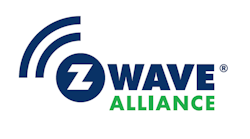Z-Wave has been gaining momentum in not only the home security market, but it seems to be expanding to areas of commercial security as well. Security Business caught up with Z-Wave Alliance Executive Director Mitchell Klein to stay up to date on the latest trends and news when it comes to Z-Wave.
Security Business: What are some of the trends with Z-Wave and the smart home in 2019?
Klein: One big trend we are seeing is the growing momentum of Z-Wave being used in smart home-adjacent markets. In the Z-Wave community, we are beginning to see lots of companies work on partnerships and products designed specifically for market verticals and applications such as MDUs and commercial buildings, energy, telecoms, insurance and others.
Additionally, we have several members – for example, Parakeet and Dwelo – that are specifically addressing smart home technology in apartment and rental property settings. As smart home becomes more mainstream, building and property managers are seeing the value of integrating that technology to not only increase renter interest, but also help in optimizing building operations.
No matter the market vertical and application, it is clear that a strong network, enforced regulation, and open standards like Z-Wave, will all continue to be an important part of IoT’s growth and maturation.
What about trends specific to the smart home security market?
As a category, smart security is still a key portion of the Z-Wave product ecosystem. With the continued rise of DIY smart home security systems from members like Ring and abode, we are seeing more customers buying smart security products via retail, but security is also still important to integrators and installers, who are seeing an increased interest from consumers in installing these systems.
We are also seeing a growth and melding between the DIY and DIFM (Do-It-For-Me) consumer models. In the past, the line was clear between consumers who were natural DIYers looking for a system they could install, tinker with and monitor on their own vs. the consumers who preferred the white glove experience of the security system being set up and monitored for them. Now, we are seeing more of a convergence between these two models, and they are both having an impact on how consumers use and adopt smart home security.
Beyond security products, how important is network security for Z-Wave and the smart home ecosystem?
Ensuring device and network security is incredibly important for consumer trust and continued enjoyment and adoption. If a smart lock is breached, a home is vulnerable, but the same could be true for the smart home network. The Alliance voted in 2017 to mandate all Z-Wave manufacturers creating new devices must include the Z-Wave Security 2 (S2) Framework, the industry’s highest level of protection from cyber-intrusion for smart home mesh networks.
What are some changes that Z-Wave has seen this year and what is coming soon?
The Z-Wave Alliance recently unveiled the updated Z-Wave Plus v2 certification, designed specifically for devices built on the new Z-Wave 700 platform. This new certification for products using Z-Wave 700 will require manufacturers to include the SmartStart readiness setup feature that enables hubs to automatically recognize accessory devices with a quick app scan of the product’s QR code.
Additionally, the number of Z-Wave products available to consumers continues to grow as Alliance members see a boost in adoption and pursue new B2B markets such as smart apartments, sustainability and energy management, digital health and hospitality. There are now more than 3,000 certified products to date and close to 500 devices on the market with the best in class S2 framework built in.
In terms of future plans, the Z-Wave Alliance is actively looking for security integrators to join our membership. We recognize that integrators are an integral part of this industry’s growth. Learn more at http://z-wavealliance.org.




